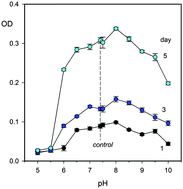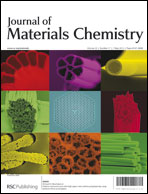Bone regeneration: importance of local pH—strontium-doped borosilicate scaffold
Abstract
The effect of local pH on bone regeneration has never been properly studied or discussed. However, using a microelectrode, the pH on the surface of implant materials, rather than in the bulk, is measurable so that the biological response based on the local environment can be studied. It was found that the osteoblast viability was significantly enhanced with an increase of pH, to an optimum level at ∼pH 8–8.5; in contrast, the activity fell markedly below pH 6. The effect of strontium on osteoblast proliferation was further increased at pH ∼8, suggesting a possible new approach for enhancing its activity in the treatment of osteoporosis. No stimulation of osteoblast proliferation was found for boron at normal physiological pH but, surprisingly, such an effect was found at pH 8.5. For the degradation of strontium-doped borosilicate, the ambient alkaline pH not only enhanced the activity of strontium and boron, but also facilitated the nucleation of apatite, as indicated by the newly formed bony tissue. Consequently, appropriately designed biomaterials, which create such an ideal ambient alkaline environment for bone regeneration, may be crucial aspects for bone substitutes.


 Please wait while we load your content...
Please wait while we load your content...